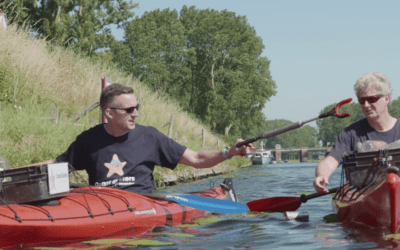This year, the United Nations Ocean Conference took place from 9 to 13 June in Nice, France, bringing together representatives from nearly 200 countries to accelerate global action on ocean protection. The Conference marked major progress on key initiatives, including the near ratification of the High Seas Treaty. The message was clear: the world is rallying to safeguard our ocean, but urgent action and innovative solutions are needed now more than ever.
Author: Cristina Barreras
The Conference at a glance
The 2025 UN Ocean Conference (UNOC3) was the largest event of its kind in terms of global participation and the scale of commitments made. Co-hosted by France and Costa Rica in Nice, it brought together world leaders, scientists, innovators, and NGOs worldwide with one shared goal: to accelerate action and mobilise actors to use the ocean sustainably. The overarching theme of UNOC3 aimed to build on existing and innovative instruments, form partnerships, and create a new relationship between humans and the marine environment [1].
The urgency of the moment was impossible to ignore. Ocean ecosystems are under increasing pressure from pollution, overfishing, illegal activity, and the growing impacts of climate change. Marine debris, particularly plastic pollution, continues to threaten biodiversity and human livelihoods, making it more critical than ever to take coordinated, science-backed action. While the Conference did not end with any new legally binding treaties, it pushed forward several key international frameworks and encouraged stronger national and global commitments.

The High Seas Treaty nears the finish line
One of the most closely watched developments at UNOC3 was the momentum behind the High Seas Treaty or the Biodiversity Beyond National Jurisdiction (BBNJ) agreement. This agreement was signed two years ago to put 30% of the ocean into marine protected areas (MPAs) by 2030. Before the Conference, only 27 out of 60 states had ratified. Over just a few days, that figure jumped to 50. The Treaty requires 60 ratifications to come into force [2].
President Macron claimed that 15 other countries are in the process of ratifying with a definite date, and another 15 will happen before the end of this year. This means that there is hope that the Treaty can come into effect by late 2025 or the beginning of 2026 [3]. This Treaty is essential for the protection of our ocean. Without it, large areas of marine biodiversity remain ungoverned and vulnerable.
Despite countries ratifying the Treaty as a sign of hope and political action, the path forward is not guaranteed. The Treaty’s implementation will require not just ratification, but enforcement, funding, and political will.
Marine Protected Areas take centre stage
MPAs were a defining theme at UNOC3. France and French Polynesia made headlines with the launch of the world’s largest marine protected area covering 4.8 million square kilometres in the South Pacific. It also includes a 900 km² zone under strict protection with bands on industrial fishing, trawling, and seabed mining [4].
Costa Rica, Colombia, and Ecuador announced the first-ever transnational MPA on the high seas, a milestone in regional cooperation. The UNEP reports that combined efforts at the conference increased the share of protected oceans from 8.4% to more than 10% [5].
Additionally, 37 countries announced moratoriums on deep-seabed mining, joining growing calls for a precautionary pause. This comes weeks after President Donald Trump issued an executive order that granted concessions for seabed mining. President Macron called for an international moratorium on deep-sea mining and multilateralism to protect the ocean [6]. The precautionary pause recalls the need to first explore abyssal ecosystems before considering any exploitation of their resources [7].

A wake-up call for plastic pollution
Plastic pollution was another urgent focus at the UNOC3. The “Nice Wake-up-Call,” signed by 96 countries, urged the world to pursue an ambitious global treaty on plastic pollution; one that addresses the full lifecycle of products, from production to waste.
While momentum is building, political will remains uneven. Only one major oil-producing country (Canada) signed on. This brings a central challenge: many of the world’s largest plastic producers are reluctant to commit to binding measures. Current commitments under the Nice Call would reduce marine plastic leakage by only 8 to 9 per cent [8]. However, initiatives like the Circemed Project, which aims to develop regional alternatives to plastics in the Mediterranean, offer promising models [9].
Funding and the Blue Economy
Ocean health can’t be achieved without sustainable financing. At UNOC3, donors reaffirmed an €8.7 billion package pledged in 2024. A new UN Ocean Finance Facility was launched to streamline access and attract private co-investment. Additionally, the EU unveiled its European Pact for the Ocean, including a 1 billion commitment to protect biodiversity, support research and innovation, and strengthen coastal resilience [10].

Steps forward
The 2025 UN Ocean Conference made it clear that the world is finally paying attention to the state of our ocean. Milestones were achieved, the High Seas Treaty is closer than ever to coming into force, MPAs are expanding, and 96 countries backed the call for a global treaty on plastics. These wins represent years of advocacy, science, and diplomacy.
But even though progress has been made, urgent work remains. The crisis of ocean degradation far outpaces our current response. These voluntary commitments, while encouraging, lack substance without actual enforcement.
As UN Chief, António Guterres said:
“We live in an age of turmoil, but the resolve I see here gives me hope. Hope that we can turn the tide, that we can move from plunder to protection” [11].
The ocean does not need more promises. It needs action, accountability, and a shared recognition that protecting marine ecosystems is not just a choice but a necessity. Leaders will gather again in August for the fifth session of the Intergovernmental Negotiation Committee on plastic pollution (INC-5.2). This resumed session is crucial in shaping the draft of a legally binding global plastics treaty.
As the momentum for ocean protection grows, the outcome of this session could determine whether leaders are finally ready to unite and tackle the plastics crisis [12].
References
[1] IISD, 2025, Summary report, 9-13 June 2025, https://enb.iisd.org/2025-un-ocean-conference-summary
[2] Stallard, E., 2025, Glimmer of hope for marine life at UN Ocean conference, https://www.bbc.com/news/articles/cq69e4j6jz8o
[3] Frost, R., 2025, Macron says High Seas Treaty could take effect from January after surge in support at ocean summit, https://www.euronews.com/green/2025/06/09/landmark-treaty-to-protect-the-high-seas-now-inches-away-from-60-signatures-for-ratificati
[4] Bennett, P., 2025, French Polynesia Announces World’s Largest Marine Protected Area at UN Ocean Conference, https://www.ecowatch.com/marine-protected-area-french-polynesia.html
[5] United Nations Ocean Conference Nice, France 2025, 2025, The Nice Commitments for the Ocean, https://unocnice2025.org/app/uploads/2025/06/Nice-Commitments-for-the-Ocean_compressed-1.pdf
[6] Schröder, P., 2025, The UN Ocean Conference is a critical opportunity to protect the ocean from deep-sea mining,https://www.chathamhouse.org/2025/06/un-ocean-conference-critical-opportunity-protect-ocean-deep-sea-mining
[7] United Nations Ocean Conference Nice, France 2025, 2025, The Nice Commitments for the Ocean, https://unocnice2025.org/app/uploads/2025/06/Nice-Commitments-for-the-Ocean_compressed-1.pdf
[8] Arampatzis, M., 2025, UNOC 4: From Nice, with Hopes and Realism, https://www.tovima.com/opinions/unoc-3-from-nice-with-hopes-and-realism/
[9] United Nations Ocean Conference Nice, France 2025, 2025, The Nice Commitments for the Ocean, https://unocnice2025.org/app/uploads/2025/06/Nice-Commitments-for-the-Ocean_compressed-1.pdf
[10] ibid.
[11] McVeigh, K., 2025, World must move from ‘plunder to protection’ to save oceans, UN chief warns, https://www.theguardian.com/environment/2025/jun/09/world-must-move-from-plunder-to-protection-to-save-oceans-un-chief-warns
[12] Packaging Europe, 2025, What’s next for the INC Plastics Treaty negotiations?https://packagingeurope.com/news/whats-next-for-the-inc-plastics-treaty-negotiations/12942.article




